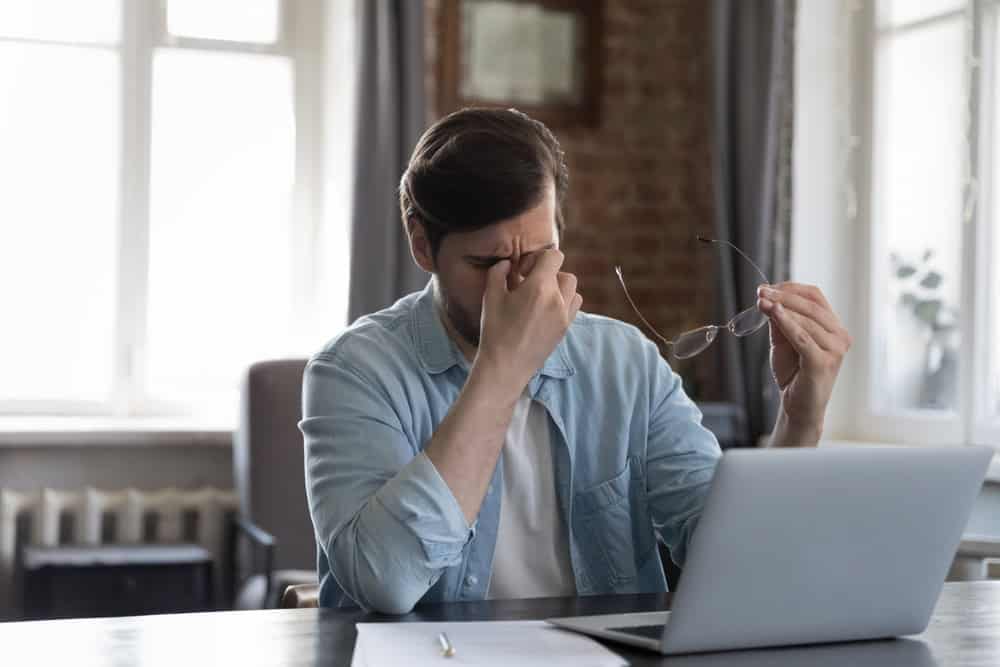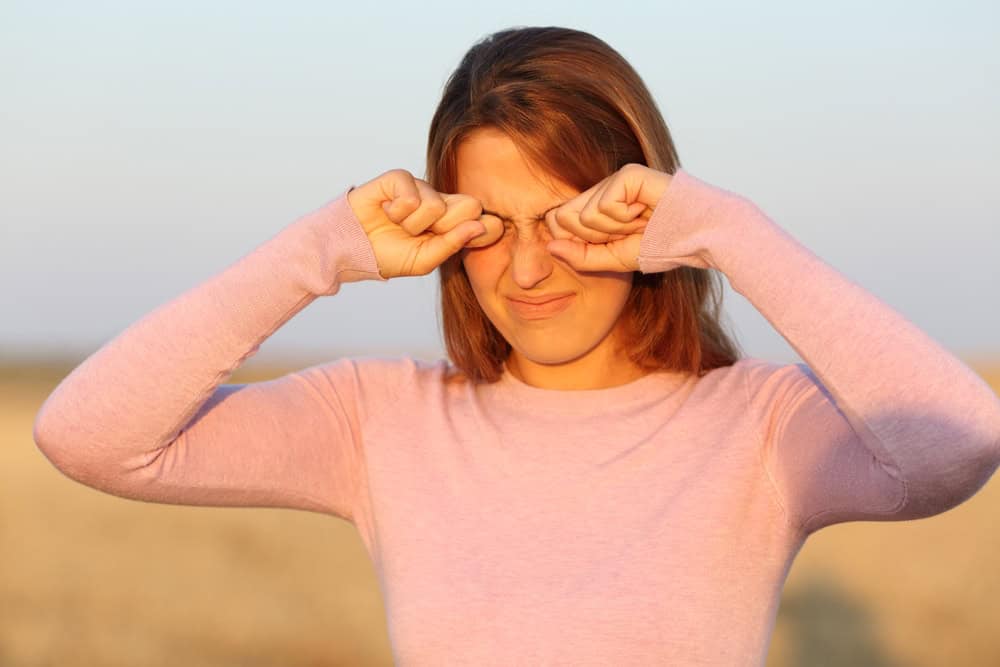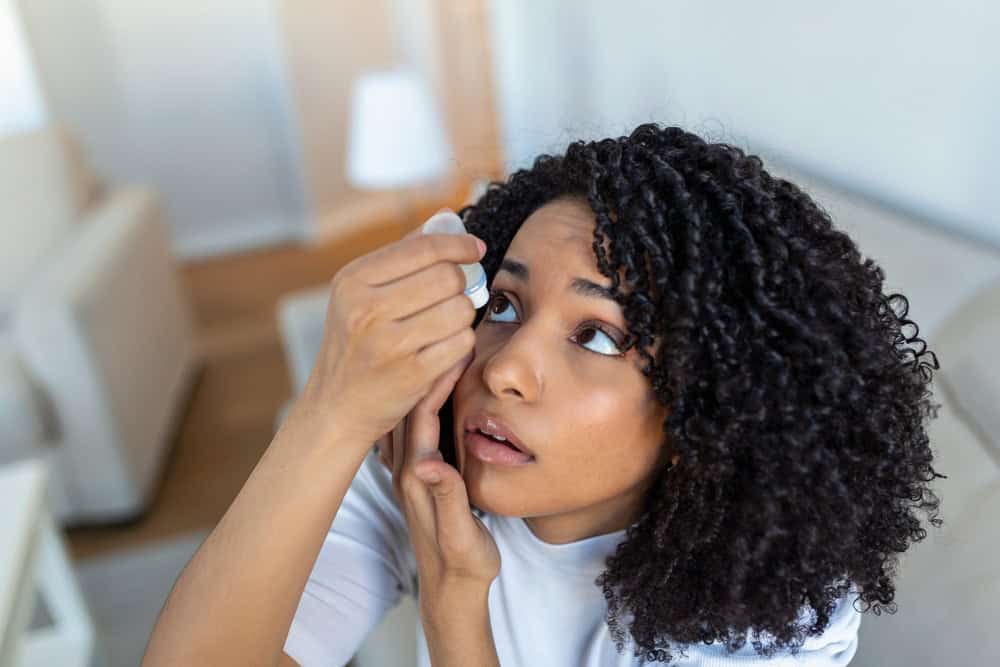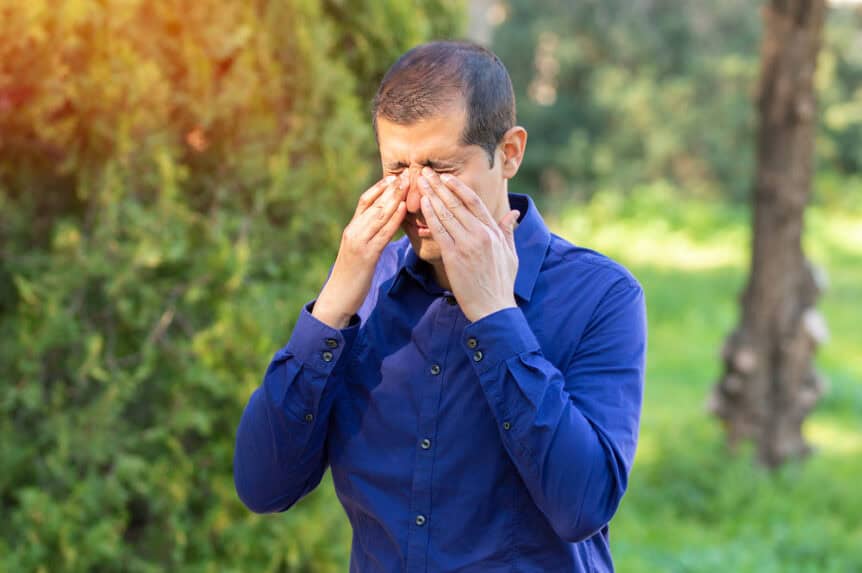Dry eyes are a common experience that most people have dealt with. You may notice your eyes feel dry, gritty, or sore after being outside in hot weather or binge-watching the new season of your favorite show.
Usually, you can relieve the sensation by resting and using eye drops. However, if dry eyes don’t get better or you have frequent episodes of dry eye symptoms, you may have a chronic condition called dry eye syndrome.
You may be able to manage the symptoms of dry eyes with over-the-counter eye drops and lifestyle changes, but you can also see your eye doctor for treatment. Keep reading to find out how to know if you have dry eyes and how to best treat them.
What is Dry Eye Syndrome?

Dry eye syndrome is a chronic condition that causes a lack of lubrication on the outer layer of your eyes. The eyes rely on a multi-layered moisture barrier called the tear film to keep them properly lubricated.
The tear film protects against debris and flushes away any particles that get into the eyes. It also keeps the delicate tissues of the eyes adequately moisturized.
Without the right balance of fluids in the tear film, your eyes may feel more sensitive. It can be more susceptible to injury or infection.
What are the Symptoms of Dry Eye?
Dry eye causes persistent physical symptoms that don’t go away independently. The symptoms may be long-term, or you may have periods where they flare up and then get better for a while.
Common physical symptoms of dry eye include:
- Eyes that feel dry or gritty
- Burning or stinging eyes
- Itching and soreness
- Excess tearing or watery eyes
- Eyelids that are red or swollen
- Mucus, crusting, or discharge from the eyes
In addition to the irritation and physical discomfort from dry eyes, you may notice changes to your vision during dry eye flare-ups.
Visual issues due to dry eyes can include:
- Light or glare sensitivity
- Blurriness that doesn’t go away with drops or blinking or comes back afterward
- Excessive or unusual eye fatigue
- Contact lenses that feel dry or uncomfortable
Are your eyes dry or irritated?
What are the Causes of Dry Eye Syndrome?

The tear film is a mixture of different fluids combined to make a protective barrier over the eyes. If any elements of the tear film are compromised, your eyes will feel dry and uncomfortable.
The tear film consists of three layers:
- The lipid layer containing oils
- The aqueous layer containing water
- The mucin layer contains lubricating mucus
There are several underlying causes of dry eye syndrome:
Aqueous Deficient Dry Eye
If you have aqueous dry eye, your eyes don’t produce enough aqueous or watery tears from the lacrimal gland in the upper outer corner of your eyes.
Evaporative Dry Eye
With evaporative dry eye, your tears evaporate too quickly, usually because the meibomian gland doesn’t produce enough oily fluids. Without enough lipids in the tear film, the watery layer of tears evaporates too quickly.
Mixed Dry Eye
Having mixed dry eye means you have a combination of insufficient aqueous tears and oily tears to prevent evaporation.
Anyone can develop dry eyes, but certain factors increase your risk, including:
- Age: Over time, your eyes may no longer produce tears as efficiently
- Gender: Women are more susceptible to dry eyes than men. Pregnancy and menopause may contribute to increased symptoms of dry eyes.
- Diet and lifestyle: Smoking tobacco can increase dry eye symptoms. A diet low in vitamin A or omega-3 fatty acids can increase the symptoms of dry eyes.
- Medical conditions: Certain autoimmune diseases, such as lupus, scleroderma, or thyroid disease, can cause dry eyes. Some medications can also cause dry eye symptoms.
Managing Dry Eye Syndrome
Avoiding environmental triggers that cause dry eye symptoms can be very helpful in preventing flare-ups of dry eyes. You can help manage these frustrating symptoms by following tips like:
- Avoid sitting near fans or air vents that blow air toward your face.
- Run a humidifier at home or work to keep air from getting too dry.
- Take frequent breaks, especially when working on the computer. Use the 20-20-20 rule. Every 20 minutes, look at something 20 feet away for 20 seconds.
- Make sure you blink regularly. Many people blink less frequently when looking at screens such as a computer or tablet. Take time to close your eyes or blink repeatedly for a few seconds periodically if you’re working on the computer. Blinking helps spread tears across the surface of your eyes.
- Set your computer screen or reading materials below eye level. Looking downward at your work allows you to keep your eyelids lower, which covers the eyes and prevents some tear evaporation.
When you have symptoms of dry eye syndrome, try over-the-counter remedies to reduce discomfort. Artificial tears are eye drops that moisturize your eyes and relieve discomfort from dry eyes.
Many kinds of eye drops are available, so talk to your eye doctor at Bucks-Mont Eye Associates to determine which type of eye drops may be best for your symptoms.
You can use a washcloth soaked in warm ( but not hot) water as a warm compress to soothe symptoms. Place the compress over your eyes for 10 minutes.
Using warm compresses regularly can allow your meibomian glands to replace the oil layer of tears. You may also want to use eye drops if your eyes still feel dry after using a warm compress.
Some people get relief from dry eyes by adding foods rich in omega-3 fatty acids and vitamins A, D, C, and E to their diet. Drinking plenty of fluids to stay hydrated may also reduce the severity of dry eye symptoms.
Prescription Treatments for Dry Eyes

If home care and over-the-counter remedies don’t offer enough relief, you should see your eye doctor to discuss your symptoms. Your eye doctor can examine your eyes to determine the type of dry eyes you have and what treatment will help.
Your eye doctor may suggest prescription eye drops to reduce inflammation and make your eyes more comfortable. You may also benefit from prescription medication to increase tear production and keep your eyes more lubricated.
If your dry eye is caused by loss of tears, your eye doctor might prescribe small devices called punctal plugs. These are tiny plugs that are inserted into your tear ducts.
They prevent tear loss, so your eyes don’t dry out as quickly by keeping tears on the surface of your eyes for longer. These come in both temporary and permanent options, depending on your needs.
Do you have dry eyes? Get the relief you need by scheduling an appointment today at Bucks-Mont Eye Associates in Sellersville, PA!
